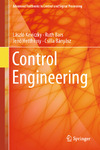Control Engineering

View/
Date
2019Author
Keviczky, László
Bars, Ruth
Hetthéssy, Jenő
Bányász, Csilla
Metadata
Show full item recordAbstract
“Navigare necesse est”, i.e., the ship must be navigated, said the Romans in
Antiquity. “Controlare necesse est”, i.e. systems must be controlled, we have been
saying since the technological revolution of the nineteenth century. Really, in our
everyday life, or in our environment, one can hardly find equipment that does not
contain at least one or more control tasks solved by automation instead of by us, or,
more importantly, for our comfort.
In an iron, a temperature control system is operated by a relay, in a gas-heating
system the temperature is also controlled, and in more sophisticated systems the
temperature of the environment is also taken into consideration. In our homes,
modern audio-visual systems contain dozens of control tasks, e.g., the regulation
of the speed of the tape recorders, the start and stop operation of the equipment;
similar operation modes of the CD and DVD systems; the temperature control
of the processor in our PC, the positioning of the hard disks’ heads, etc. In cars, the
quantity of petrol used and the harmonized operation of the brakes are all controlled
by automatic controllers. An aircraft could not fly without controllers, since its
operation is a typical example of an unstable system. The number of control tasks in
modern aircraft is more than one hundred. The universe could not have been
investigated by humankind without the automatic control and guidance systems
used at launching rockets, satellites, and ballistic missiles. In the recent Mars
explorers, sophisticated high-level, so-called intelligent components, have been
employed.
In complex, industrial processes the number of tasks to be solved is over a
thousand or ten thousand. The quantity and quality of the products, as well as the
safety of the environment, could not be guaranteed without these automatically
operated systems. Launching products in the market requires the accurate control of
a number of variables.
In almost all assembly factories—from simple production beltways to robots—
automatic control is applied.
